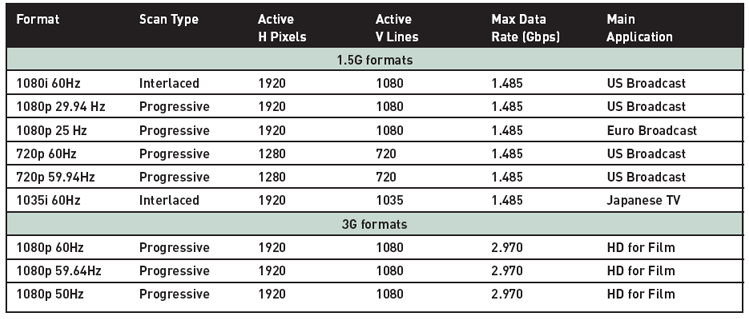Video 3G is the future of HD. Will you be ready?
Coming off the NAB floor this year, I felt a little like a clerk at a cell phone outlet. Many times per day, I found myself explaining what “3G” is, and why most leading video manufactures were displaying “3G-ready” products such as switchers and routers. Unlike the cell phone industry, in which 3G defines their “third-generation” wireless network, 3G in video terms refers to the 3-Gigabit data rate — as it applies to processing and bandwidth in the video workflow. Our 3G means much higher HD signal processing, while their 3G only means, “yes, enough already, I can hear you now.”
Formulas and Formats
To understand video 3G, you must first understand the current video signal processing scheme. For the most part, video processing power has been limited to 1.5 Gigabits, the data rate for high definition television. Just like everything else in video, there’s a formula to calculate the bandwidth required to process any video signal.
Using the broadcast standard 4:2:2 component signal (Y, R-Y, B-Y), the formula is:
Horizontal Pixels x Vertical Pixels x 2 Components x Refresh Rate x 10bits = X Gigabits
Example: 1920 x 1080 x 59.94 x 10bits = 1.243 Gigabits
Table 1 provides a quick chart of the common HD video formats, and their associated data rates and applications.
The current terrestrial broadcast chain only supports 1.5 Gbps transmissions. Currently, the only way to obtain true progressive 1080p signals is through a local source, such as a video server, and the cost to broadcast 3G signals may in fact keep them out of traditional broadcast channels for a while. However, the concept of local video servers downloading content via the net may accelerate 3G’s entry into the market. Concurrently, as this area matures, the availability of “3G-ready” video products will ensure that one’s investments will endure for the next wave of HD — essentially, as the industry evolves, a 3G product is a “future-proof” product.
Forward-Thinking Benefits
Video products that are 3G ready will also have the necessary bandwidth to process standard computer signals in the 4:4:4 color space. This, in turn, allows for a more flexible product and a new way to look at “seamless switchers” in the traditional AV market. Forward-thinking companies will lead the way with new “hybrid” switchers that act and function like traditional production switchers — without the signal limitations inherent in the last generation of similar products. With most display products moving to HD formats, we could also predict fewer conversion issues. As product flexibility increases, the need for additional processing decreases proportionally — and that, in turn, increases the ease of use and design of video systems.
In the AV industry, we’re just now wrapping our hands fully around “standard” HD, and the comfort level is quite high. But if there’s one constant in technology, it’s that change occurs faster as technology gets better. The new wave of 3G video products is on the leading edge of video technology, and they merit a closer look. Even though they’re far ahead of the curve, they promise high quality and longevity through the next wave of “higher definition” HD.










